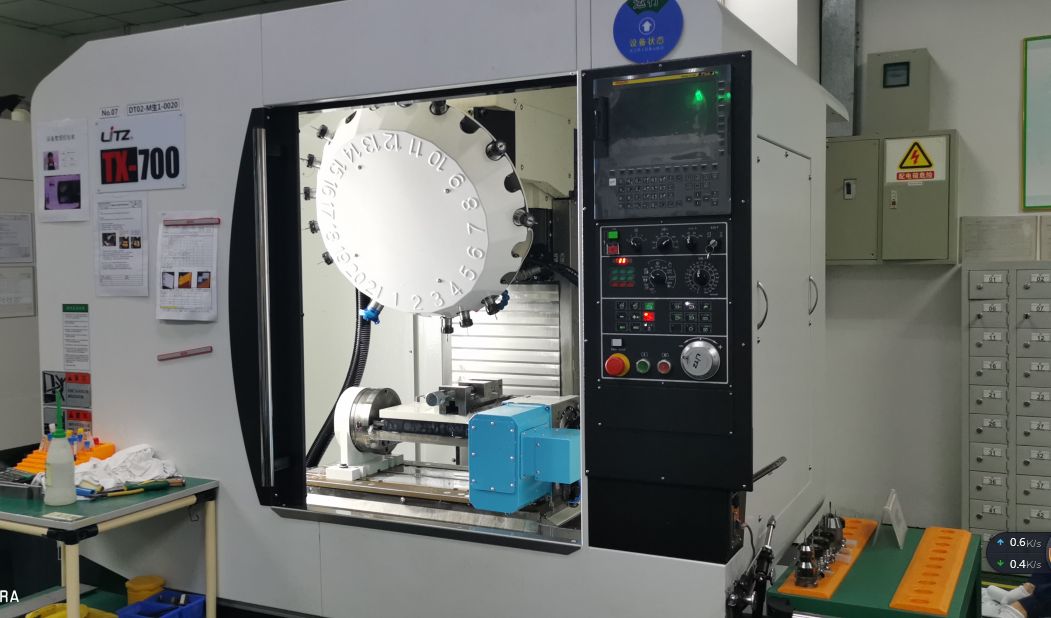Plunge milling, also known as Z-axis milling, is one of the most effective machining methods for metal cutting with high removal rates. For surface machining, grooving machining of difficult-to-machine materials, and machining with large tool overhang, the machining efficiency of plunge milling is much higher than that of conventional face milling. In fact, plunging can cut machining time by more than half when large amounts of metal need to be removed quickly.

▉ Advantage
Plunge milling offers the following advantages:
①It can reduce the deformation of the workpiece;
②It can reduce the radial cutting force acting on the milling machine, which means that the spindle with worn shafting can still be used for plunge milling without affecting the machining quality of the workpiece;
③The overhang of the tool is large, Which is very beneficial for the milling of workpiece grooves or surfaces;
④ It can realize the grooving of high-temperature alloy materials (such as Inconel). Plunge milling is ideal for roughing mold cavities and is recommended for efficient machining of aerospace components. One particular use is the plunging of turbine blades on three- or four-axis milling machines, which usually require special machine tools.
▉ Working principle
When plunging a turbine blade, it can be milled from the top of the workpiece all the way down to the root of the workpiece, and extremely complex surface geometries can be machined through a simple translation of the X-Y plane. When plunging is performed, the cutting edge of the milling cutter is formed by overlapping the profiles of the inserts. The plunging depth can reach 250mm without chattering or distortion. The cutting movement direction of the tool relative to the workpiece can be either downward or downward. Upwards, but generally downwards cuts are more common. When plunging an inclined plane, the plunging cutter performs compound motions along the Z-axis and X-axis. In some processing situations, spherical milling cutters, face milling cutters or other milling cutters can also be used for various processing such as slot milling, profile milling, bevel milling, and cavity milling.
▉ Scope of application
Dedicated plunge milling cutters are primarily used for roughing or semi-finishing, cutting into recesses or cutting along the edge of the workpiece, as well as milling complex geometries, including root digging. To ensure constant cutting temperature, all shank plunging cutters are internally cooled. The cutter body and insert of the plunging cutter are designed so that they can cut into the workpiece at the best angle. Usually, the cutting edge angle of the plunging cutter is 87° or 90°, and the feed rate ranges from 0.08 to 0.25mm/tooth. The number of inserts to be clamped on each plunge milling cutter depends on the diameter of the milling cutter. For example, a milling cutter with a diameter of φ20mm can be fitted with 2 inserts, while a milling cutter with a diameter of f125mm can be fitted with 8 inserts. In order to determine whether the machining of a certain workpiece is suitable for plunge milling, the requirements of the machining task and the characteristics of the machining machine used should be considered. If the machining task requires a high metal removal rate, the use of plunge milling can significantly reduce the machining time.
Another suitable occasion for the plunging method is when the machining task requires a large axial length of the tool (such as milling large cavities or deep grooves), since the plunging method can effectively reduce the radial cutting force, it is relatively Compared with the milling method, it has higher machining stability. In addition, when the parts of the workpiece that need to be cut are difficult to reach with conventional milling methods, plunging milling can also be considered. Since the plunging cutter can cut metal upwards, complex geometries can be milled.
From the point of view of machine tool applicability, if the power of the processing machine used is limited, the plunge milling method can be considered, because the power required for plunge milling is less than that of helical milling, so it is possible to use old machine tools or underpowered machine tools to obtain better performance. High processing efficiency. For example, plunging deep grooves can be achieved on a class 40 machine tool, which is not suitable for machining with long-edge helical cutters, because the radial cutting force generated by helical milling is large, which is easy to make the helical The milling cutter vibrates.
Plunge milling is ideal for older machines with worn spindle bearings due to the lower radial cutting forces during plunging. The plunge milling method is mainly used for rough machining or semi-finishing machining, and a small amount of axial deviation caused by the wear of the machine tool shaft system will not have a great impact on the machining quality. As a new type of CNC machining method, the plunge milling method puts forward new requirements for CNC machining software.
Post time: Sep-29-2022




